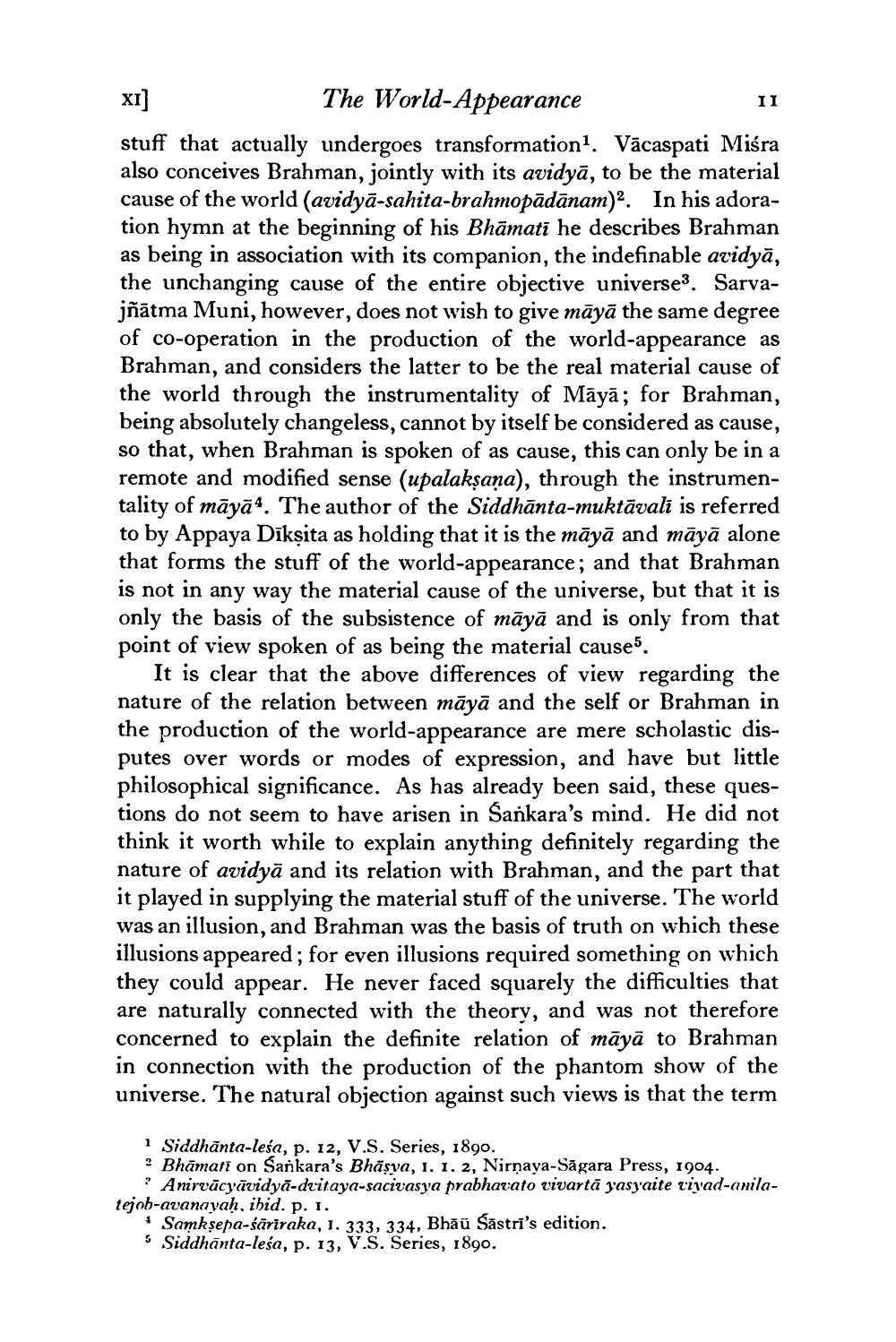________________
XI]
The World-Appearance
stuff that actually undergoes transformation1. Vācaspati Miśra also conceives Brahman, jointly with its avidya, to be the material cause of the world (avidyā-sahita-brahmopādānam)2. In his adoration hymn at the beginning of his Bhāmati he describes Brahman as being in association with its companion, the indefinable avidyā, the unchanging cause of the entire objective universe3. Sarvajñātma Muni, however, does not wish to give māyā the same degree of co-operation in the production of the world-appearance as Brahman, and considers the latter to be the real material cause of the world through the instrumentality of Maya; for Brahman, being absolutely changeless, cannot by itself be considered as cause, so that, when Brahman is spoken of as cause, this can only be in a remote and modified sense (upalakṣaṇa), through the instrumentality of māyā1. The author of the Siddhanta-muktāvalī is referred to by Appaya Dikṣita as holding that it is the māyā and māyā alone that forms the stuff of the world-appearance; and that Brahman is not in any way the material cause of the universe, but that it is only the basis of the subsistence of māyā and is only from that point of view spoken of as being the material cause5.
II
It is clear that the above differences of view regarding the nature of the relation between māyā and the self or Brahman in the production of the world-appearance are mere scholastic disputes over words or modes of expression, and have but little philosophical significance. As has already been said, these questions do not seem to have arisen in Sankara's mind. He did not think it worth while to explain anything definitely regarding the nature of avidya and its relation with Brahman, and the part that it played in supplying the material stuff of the universe. The world was an illusion, and Brahman was the basis of truth on which these illusions appeared; for even illusions required something on which they could appear. He never faced squarely the difficulties that are naturally connected with the theory, and was not therefore concerned to explain the definite relation of māyā to Brahman in connection with the production of the phantom show of the universe. The natural objection against such views is that the term
1 Siddhanta-lesa, p. 12, V.S. Series, 1890.
2 Bhamati on Sankara's Bhāṣva, 1. 1. 2, Nirnaya-Sagara Press, 1904.
? Anirvācyāvidya-dvitaya-sacivasya prabhavato vivarta yasyaite viyad-anilatejob-avanayah, ibid. p. 1.
Samkṣepa-sariraka, 1. 333, 334, Bhau Sastri's edition.
5 Siddhanta-leśa, p. 13, V.S. Series, 1890.




